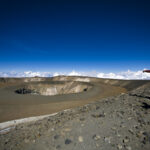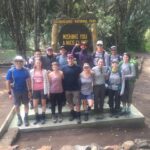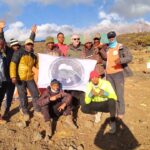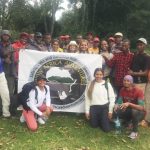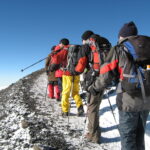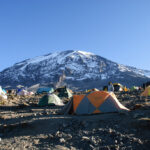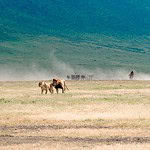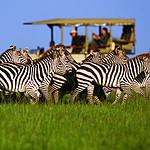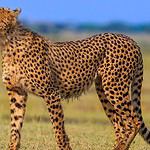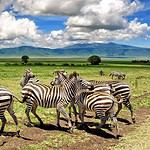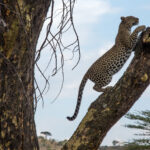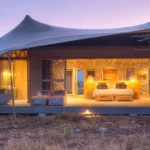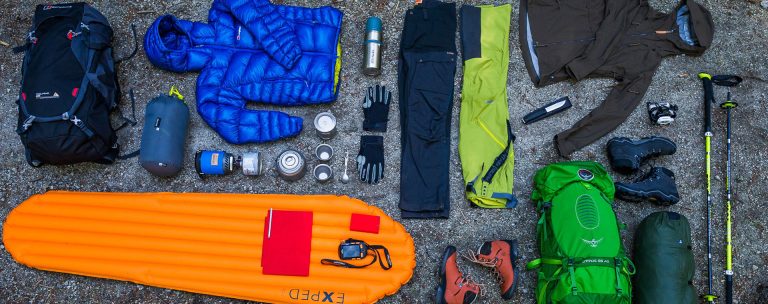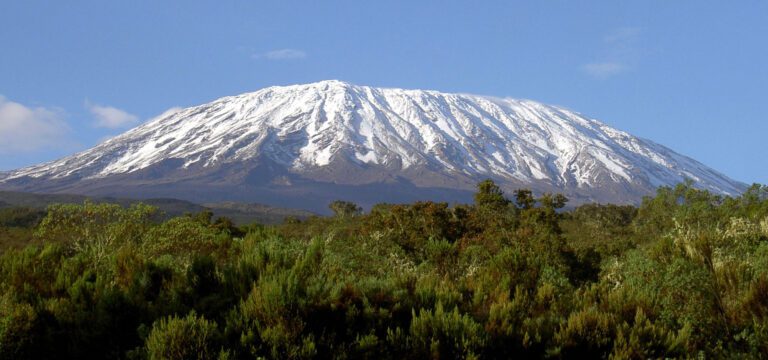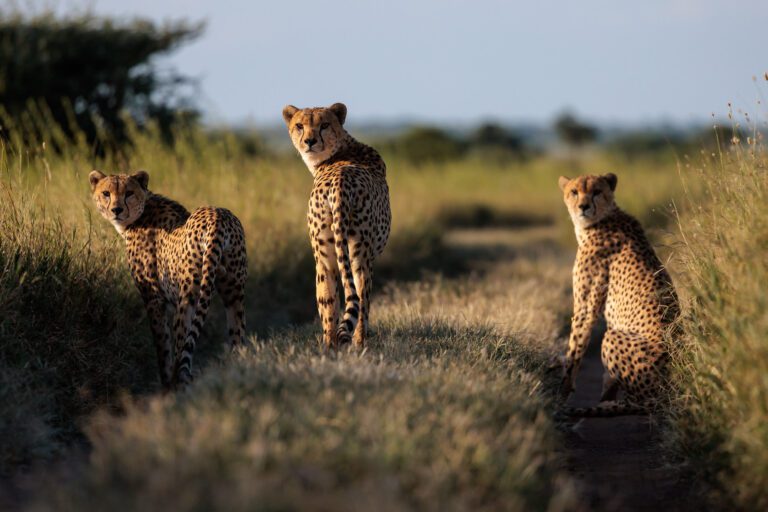Table of Contents
2025 Kilimanjaro Climbing Predictions: What to Expect on the Mountain in the New Year
Mount Kilimanjaro is the highest peak in Africa, boasting iconic glaciers and sweeping landscapes that lure people in, attracting thousands of climbers every year. As 2025 approaches, many wonder what the new year will bring for a successful summit. From expected trends to weather forecasts, crowd levels, and upcoming regulations for 2025, this guide will cover it all to make sure you’re very well prepared for your Kilimanjaro adventure.
1.Overview of Kilimanjaro Climbing Trends
Over the years, Kilimanjaro has seen its tide of ecologically conscious climbers rise. This year, 2025, is expected to follow suit, with new sustainability measures that will affect climbers and the environment of Kilimanjaro alike. More and more, climbers are giving more priority to eco-friendly trekking gear, minimal-impact camping practices, and a deep respect for Tanzania’s natural heritage. To this effect, tour companies counter by providing sustainable package options and training guides on reducing impact on the fragile ecosystem of the mountain. From this effect, every climber who starts their journey up the mountain does not only go for personal achievement but also as a means through which Kilimanjaro will be preserved for future generations.
2.Weather Predictions for 2025 Climbing Seasons
Weather conditions on Kilimanjaro are everything when it comes to a successful climb, given that temperatures and precipitation levels can fluctuate so wildly across the various climatic zones from base to summit. In 2025, meteorologists forecast slightly above-average temperatures with spasmodic rain fluctuations. This is important for climbers, as fluctuating rain patterns indeed affect trail conditions and visibility. Here is a breakdown of the expected weather for each climbing season:
Climbing Season | Expected Weather Conditions | Best Routes |
January to March | mild to warm, occasional rains | |
April to May | Heavy rains, difficult conditions | Not advised |
June to October | Colder, drier, peak season with clear skies | Lemosho, Rongai |
November to December | Occasional rains, warm temperatures | Recommended routes – Marangu and Machame |
- January to March: This is generally considered the low season. These months of January to March are just perfect for those who prefer less crowding and even tolerable temperatures. Since the amount of rainfall in these months is less compared with later months, climbers can experience comfort and challenge together.
• April to May: This is characterized by long rains, with heavier rains that create muddy trails, low visibility, hence making this period less ideal for summiting. However, for climbers who can put up with these conditions, this is the least crowded time.
• June to October: These are the cooler and drier months of the peak climbing season. Usually, skies are clear, and the weather is stable; thus, a good time for climbers who want to have perfect visibility of the summit. The only disadvantage in these months is that the trails can get super crowded.
• November to December: With the short rains considered, it would be a good time to climb because the temperatures are milder and crowds are moderate. A good opportunity for those who would like to avoid the very busy trails in peak season.
Crowd Levels & Popular Routes
Popularity growth makes some routes crowded, especially in the high season from June to October. Recently, in 2025, it has drawn interest to the Northern Circuit and the Rongai Route because they are rather less crowded. The Northern Circuit allows a longer trek with great acclimatization opportunities, while the Rongai route ensures scenic views from the northern part of the mountain and is less crowded than other routes.
Popular routes to consider in 2025:
Machame Route: Scenic landscapes and a slightly higher summit success rate make this route popular but very crowded during peak times.
• Marangu Route: This is the only route that offers hut accommodation. Therefore, the advantages are that it is especially appealing during the rain season.
• Lemosho Route: This route features low traffic, a very gradual ascent, and high levels of biodiversity. As such, it is ideal for acclimatization and photography.
3.New Regulations and Sustainability Efforts
Facing the expected increase in tourism, the Tanzanian government has imposed more sustainable tourism measures on Kilimanjaro for 2025, with a view to conservational awareness. The key changes regard:
- More stringent rules for waste disposal would be imposed: trekkers would have to carry back all garbage with guides ensuring that campsites are left clean.
- Plastic ban policy entails the banning of single-use plastics such as bottles and bags from being taken up to the mountain to reduce pollution.
- Eco-Friendly Campsites: New campsites will have facilities that are eco-certified to cause minimal damage to the environment and which ensure that their waste is disposed of efficiently.
These policies have highlighted the essence of sustainable tourism; hence, climbers are expected to prepare in meeting such new standards to avoid penalties as well as preserving the natural environment of Kilimanjaro.
4.Preparation Tips for 2025 Climbers
Besides the building up of physical and mental strengths, it is also equally necessary to keep abreast of the regulations and climatic expectations. Some of these useful tips are: training for altitude-Kilimanjaro is located at high altitude, and when you go to that altitude, the chances of going through altitude sickness are quite genuine. If possible, it is advisable to prepare yourself by hiking at higher altitudes so that your body could acclimatize; it also pays to choose routes which have gentler rises.
- Quality gear is a must: The weather on the mountain could be any of the changing types, and layered clothing along with dependable trekking gear is absolutely imperative to undertake the endeavor. Good gear will keep you warm at subzero summit temperatures and dry at lower altitudes when it rains.
- Book early prior to peak season: From June through October, climbing permits and lodging have limited availability. Book in advance to avoid problems at the last minute.
- Follow regulations closely: Comprehend the notion of waste management and prohibition of the use of single-use plastic. The success of your journey with preservation of the mountain largely depends on how well you respect the set guidelines.
Strategic preparation for Kilimanjaro Climbing 2025 and respect for the natural environment of Kilimanjaro should make 2025 an ideal year for those seeking both challenge and awe on Africa’s Roof. As you plan your Kilimanjaro Climbing adventure, it’s essential to keep the latest trends, weather predictions, and sustainable practices in mind. Whether you’re a first-time climber or a seasoned adventurer, Kilimanjaro Climbing offers opportunities to embrace the majestic views and the unique challenges of Africa’s highest peak.
For Kilimanjaro Climbing , climbers should be aware of the significant weather changes that can impact their journey. Kilimanjaro Climbing 2025 is expected to have fluctuating temperatures and occasional rains, making it crucial to plan carefully for the conditions you might face. A deeper understanding of Kilimanjaro Climbing weather trends will help ensure that your experience is as comfortable as possible.
Crowd levels during Kilimanjaro Climbing 2025 will be at their peak during the high season, from June to October. For those who want to avoid large groups, Kilimanjaro Climbing 2025 offers alternative routes like the Northern Circuit and Rongai Route, which are less crowded but just as spectacular. Preparing for Kilimanjaro Climbing 2025 means choosing the right route for your personal preferences and goals.
New regulations for Kilimanjaro Climbing 2025 will also play a role in shaping the climber’s experience. Adhering to these regulations will ensure a smooth and responsible climb. Understanding the rules of Kilimanjaro Climbing, such as waste management and the plastic ban, will not only help preserve the environment but will also make the journey more fulfilling.
When it comes to physical and mental preparation for Kilimanjaro Climbing 2025, acclimatization is key. Being prepared for the altitude is crucial, as Kilimanjaro Climbing brings the challenge of high-altitude trekking. Gradual ascent routes like Lemosho or Rongai are ideal for better acclimatization during Kilimanjaro Climbing.
Proper gear is another critical component of Kilimanjaro Climbing 2025. Climbers should invest in quality clothing and equipment to handle the diverse climate conditions they’ll encounter during Kilimanjaro Climbing 2025. Layered clothing is essential, as temperatures can drop below freezing on the summit, making it crucial to be prepared for Kilimanjaro Climbing 2025’s variable weather.
Booking early for Kilimanjaro Climbing 2025 is also recommended, especially if you plan to climb during the peak season. Limited permits and accommodations are available, so securing your spot for Kilimanjaro Climbing 2025 well in advance will help ensure a smoother experience.
As you continue to prepare for Kilimanjaro Climbing 2025, respect for the mountain’s natural beauty and cultural significance will enhance your journey. Whether it’s your first climb or a return to the Roof of Africa, Kilimanjaro Climbing 2025 promises to be an unforgettable adventure. By focusing on the unique aspects of Kilimanjaro Climbing 2025, you’re ensuring that your climb will be both successful and meaningful.
In conclusion, Kilimanjaro Climbing 2025presents a blend of excitement, challenge, and awe. With the right preparation, adherence to new regulations, and a deep respect for the environment, Kilimanjaro Climbing 2025can be a rewarding and impactful journey for all climbers. Keep these tips in mind as you embark on Kilimanjaro Climbing 2025 the adventure of a lifetime awaits.

